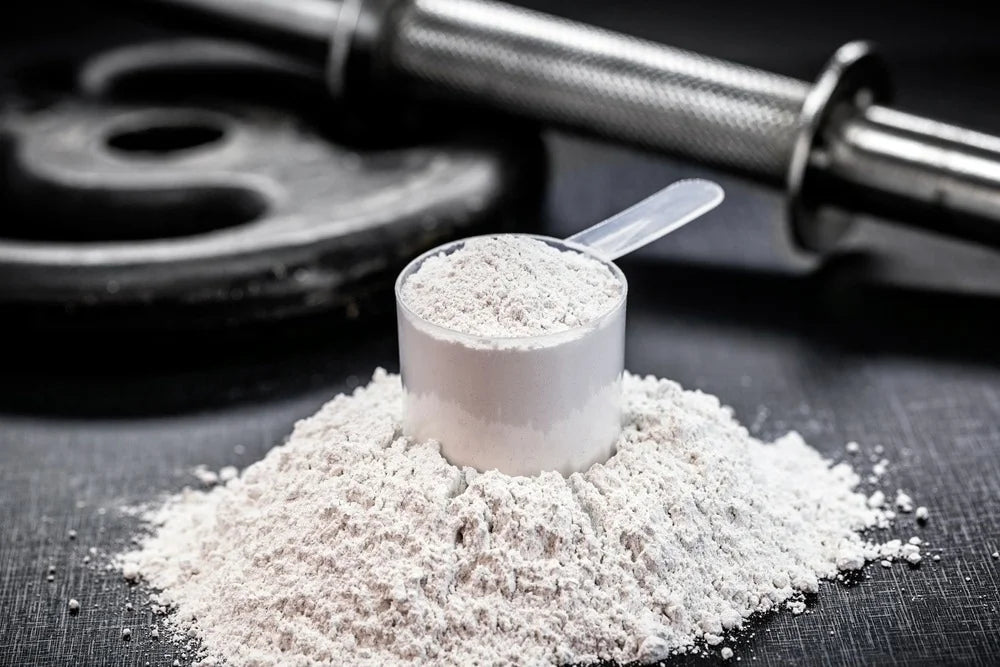
Is Creatine an Anabolic Steroid?
Share
If you've spent any time in a gym or talking about supplements, you've probably heard someone say, “Isn’t creatine basically a steroid?” This is one of the most common misconceptions about creatine. Many people think it’s a banned substance or something only hardcore bodybuilders should use.
Let’s clear this up: creatine is not a steroid. It’s a legal, natural compound found in your body and in common foods like red meat and fish.
What Is Creatine, Really?
Creatine is a substance made by your body using three amino acids: arginine, glycine, and methionine. It’s mostly stored in your muscles and helps produce quick bursts of energy, especially during high-intensity activities like sprinting or weightlifting.
You can also get extra creatine from foods or supplements. The most common form is creatine monohydrate, which has been studied for decades and shown to improve strength, power, and muscle growth when combined with exercise.
What Are Anabolic Steroids?
Anabolic steroids are synthetic versions of testosterone, a hormone in your body that plays a key role in building muscle. Steroids work by entering muscle cells, binding to receptors, and switching on genes that boost protein production. This leads to muscle growth, but also comes with serious side effects—like liver damage, hormonal issues, and increased risk of heart disease.
Steroids are classified as controlled substances in many countries, meaning they’re illegal to use without a prescription.
How Creatine and Steroids Are Different
Let’s break down the key differences:
| Feature | Creatine | Anabolic Steroids |
|---|---|---|
| Source | Naturally in food and body | Synthetic drugs |
| Legal status | Legal supplement | Controlled drug |
| Mechanism | Boosts energy production | Changes hormone levels |
| How it works | Helps with short-term muscle power | Alters DNA expression for growth |
| Side effects | Rare and mild at recommended dose | Many serious health risks |
Creatine doesn’t affect your hormones like steroids do. Instead, it helps your muscles produce more ATP (adenosine triphosphate)—your body’s main energy currency. This means you can work out harder, lift heavier, or sprint faster, which can eventually help you build more muscle over time.
But this happens naturally, through your effort—not through chemically changing your body’s hormone system.
Why the Confusion?
There are a few reasons people mix up creatine with steroids:
- Both are used by athletes to improve performance
- Both can lead to increased muscle size
- Creatine is often marketed for muscle growth, which can sound similar to how steroids are promoted
However, gaining muscle from creatine comes from working harder and recovering better, not from a drug-like boost in hormone levels.
Is Creatine Safe?
Yes—when used as directed. Creatine has been studied in over 500 research papers and is considered one of the safest and most effective supplements for exercise and performance. It’s even used in research for brain health, aging, and muscle-wasting diseases.
Typical doses are:
- Loading phase (optional): 20 grams per day for 5–7 days
- Maintenance phase: 3–5 grams per day ongoing
You can skip the loading phase and just take 3–5 grams daily for steady results over time.
Final Takeaway
Creatine is not an anabolic steroid. It’s a natural, legal supplement that helps boost energy in your muscles, allowing you to perform better in the gym or on the field. Unlike steroids, it doesn’t mess with your hormones, and it’s been shown to be safe for most people when taken at the right doses.
So if you're considering creatine, there's no need to worry—you're not taking anything illegal or dangerous. Just make sure to stay hydrated, follow the dosage guidelines, and pair it with a solid workout plan.
